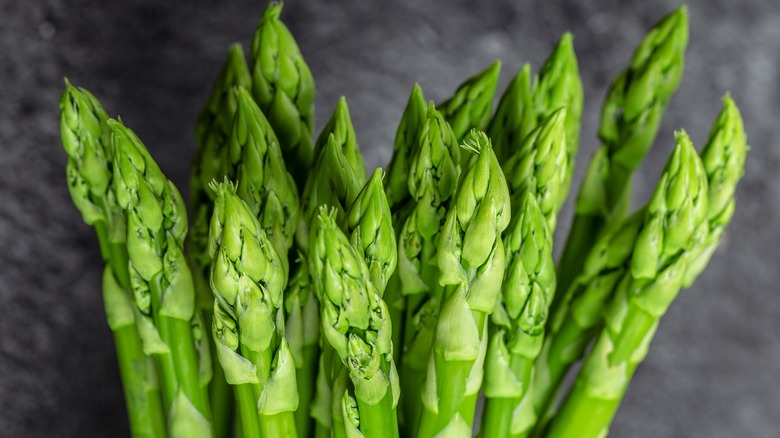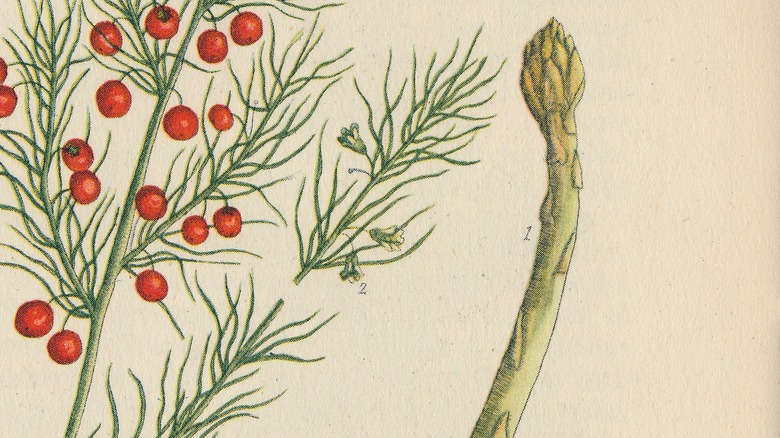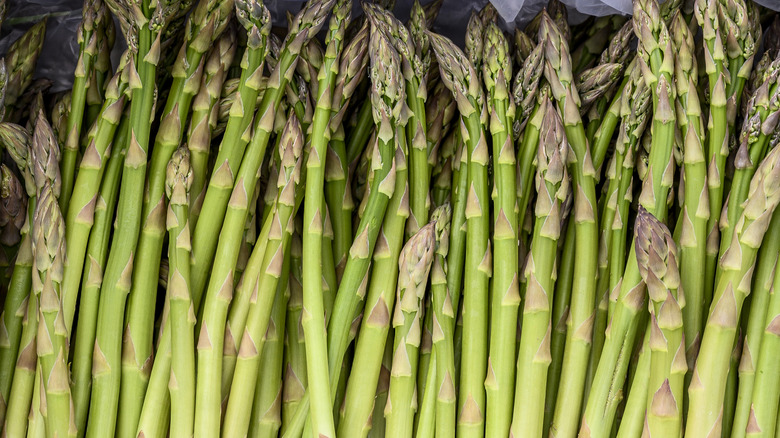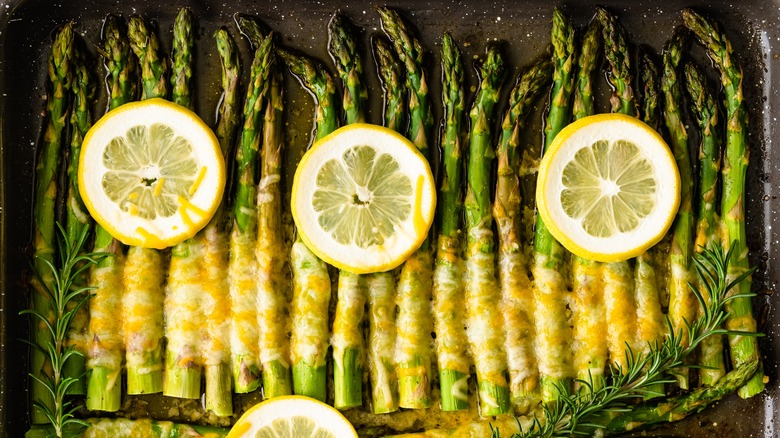What Makes Mary Washington Asparagus Unique
When you think of words like heirloom and heritage, you may consider them simple monikers for upscale or expensive food with no real meaning behind them. Apart from being a simplistic view of historical ingredients, the dismissal of heirloom varieties as nothing more than a useless title overlooks the fact that these vegetables are bursting with flavor that hasn't been genetically modified, and such is the case with Mary Washington asparagus, per Seedaholic.com.
Asparagus ranks fifth on Eat This, Not That's list of America's Favorite Vegetables, and it's easy to see why. These perennial shoots are packed with minerals like iron and potassium, and vitamins A, B, and E. They're great roasted or boiled, tossed in a dressing and used as an accompanying veggie for a weeknight meal. There are multiple different varieties of asparagus, including some that are delightfully purple. The Mary Washington variety is somewhat of a unique invention. Simultaneously heirloom and modern, it stands out as a good reminder of how American ingenuity and adaptation before the times of genetic modification created a strong, popular asparagus.
Origins of the Mary Washington asparagus
While the development of the Mary Washington asparagus occurred within the last century, the asparagus plant itself has an origin that stretches back to ancient times. According to Seedaholic.com, asparagus first sprouted up in the forests of Eastern Europe as early as 65 A.D., and it eventually spread and was cultivated across the continent courtesy of the Romans. It was commonly used for medicinal purposes, but during the Renaissance, it saw a resurgence as an edible vegetable, which is how we know it today.
Mary Washington asparagus came about out of necessity. During the early 20th century, a fungal disease known as asparagus rust was ravaging plants across Europe and the United States. J.B. Norton, a plant breeder, worked in conjunction with the USDA and Massachusetts-based asparagus growers to develop a cultivar that could resist the rust, per Baker Creek Heirloom Seeds. Eventually, Norton developed a resistant breed, which he dubbed "Washington" with two cultivars: Martha and Mary. Mary was the more vigorous and rust-resistant of the two and it has been popular since its introduction in 1919, so it has more than earned its status as an heirloom.
Appearance and flavor
According to MasterClass, the most common type of asparagus found in the grocery store is green asparagus. While white and purple varieties exist and can be found easily, when we think of asparagus we think of the green stuff. Mary Washington is in this green family and Seedaholic.com describes the spears as "tender, thick, heavy, and straight" with a "rich, dark green colour with a purple tinge." The uniformity among the spears is, in part, what makes this variety so popular. Rot resistance and longevity (15-20 years) help too.
As far as flavor goes, Mary Washington asparagus has been described as nothing less than delicious. Stark Bro's, of fruit tree fame, describe the taste as "nutty and sweet" with a "smooth, firm" texture. If you're planting Mary Washington asparagus, a good way to determine the ripeness and garner a hint of the texture is to bend the spear until it snaps. A crisp, clear-sounding snap indicates freshness and a firm, but not tough texture (via YouTube).
Recipes and substitutions
Since Mary Washington is one of the most popular varieties to grow among American gardeners (per MasterClass), using it as a substitution for common grocery store asparagus is encouraged. Due to its sweet and nutty flavor profile, the Mary Washington lends itself well to roasting, which will bring out its sweeter side. Acclaimed French chef Jacques Pepin recommends quickly blanching the asparagus so it retains its texture, then slathering it in foaming butter (via YouTube).
You could get creative with your recipes, too. You could blitz them into a creamy soup, pair them with a nice white fish like cod, or serve them up in a tart with goat cheese. Asparagus tends to be relatively uniform in terms of flavor, so the Mary Washington variety does not come with any surprises. However, the only way to really determine flavor and substitutions is to try some for yourself, so get creative and see what you like.



